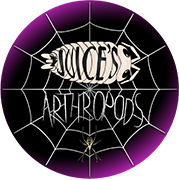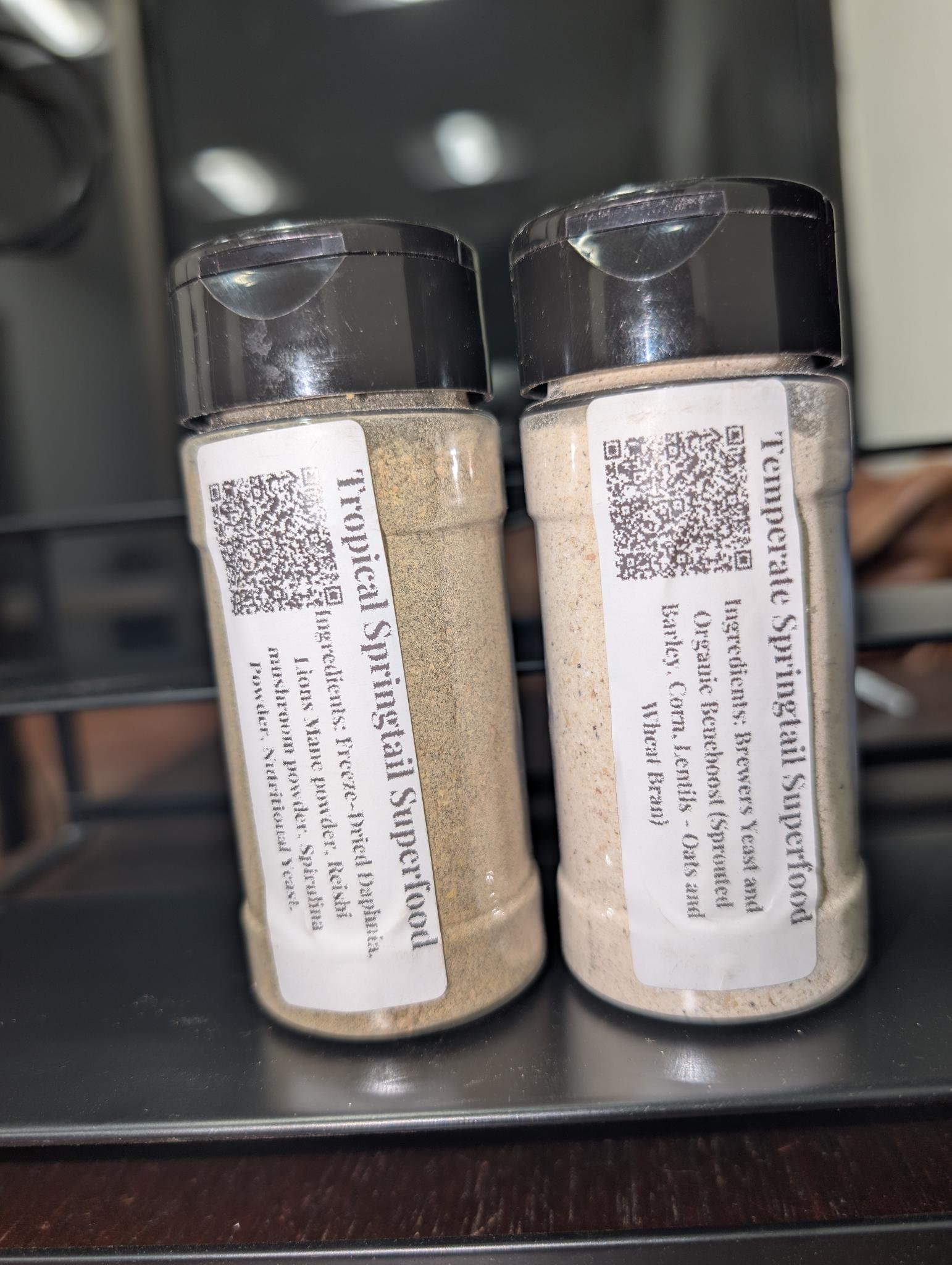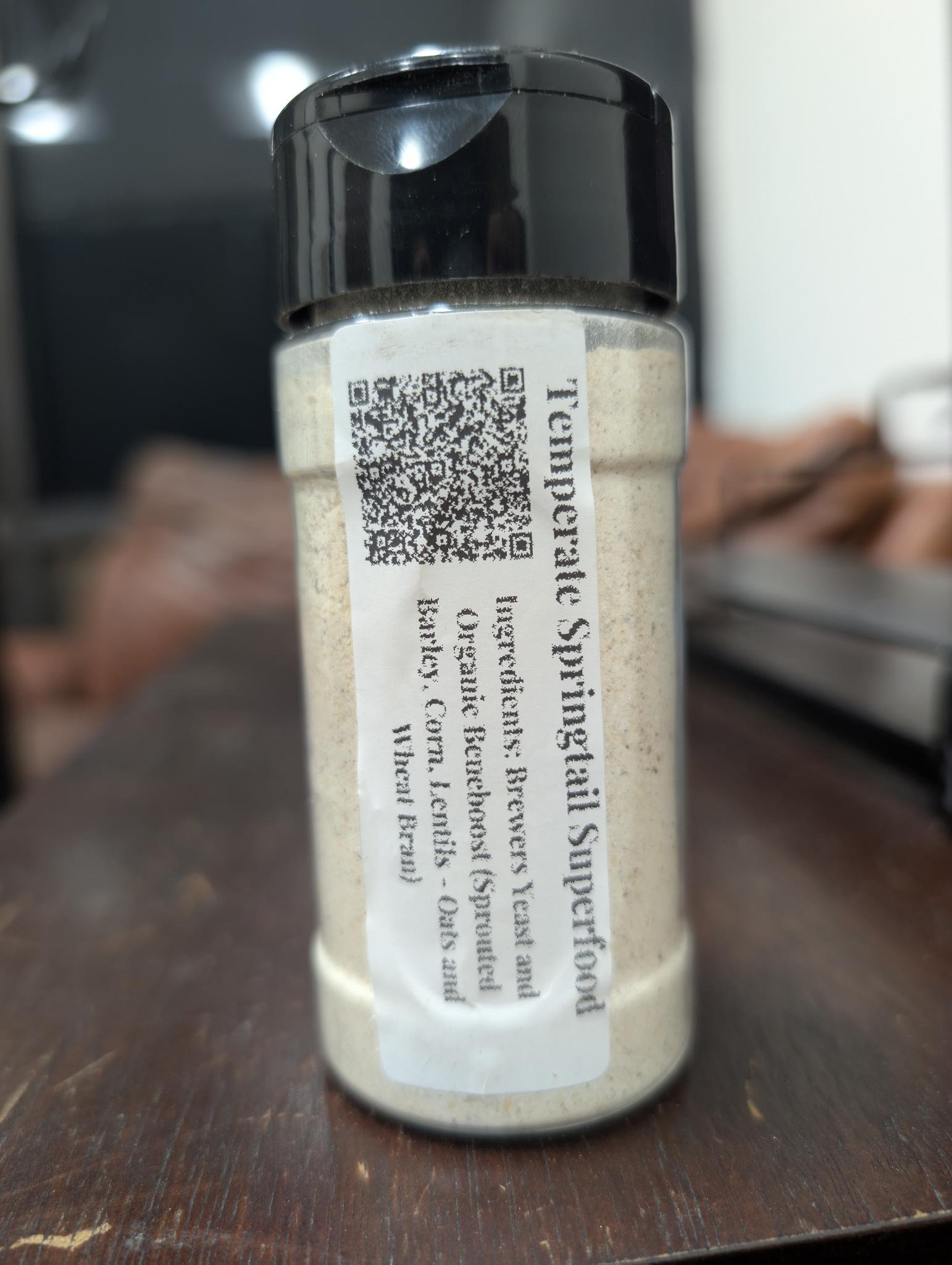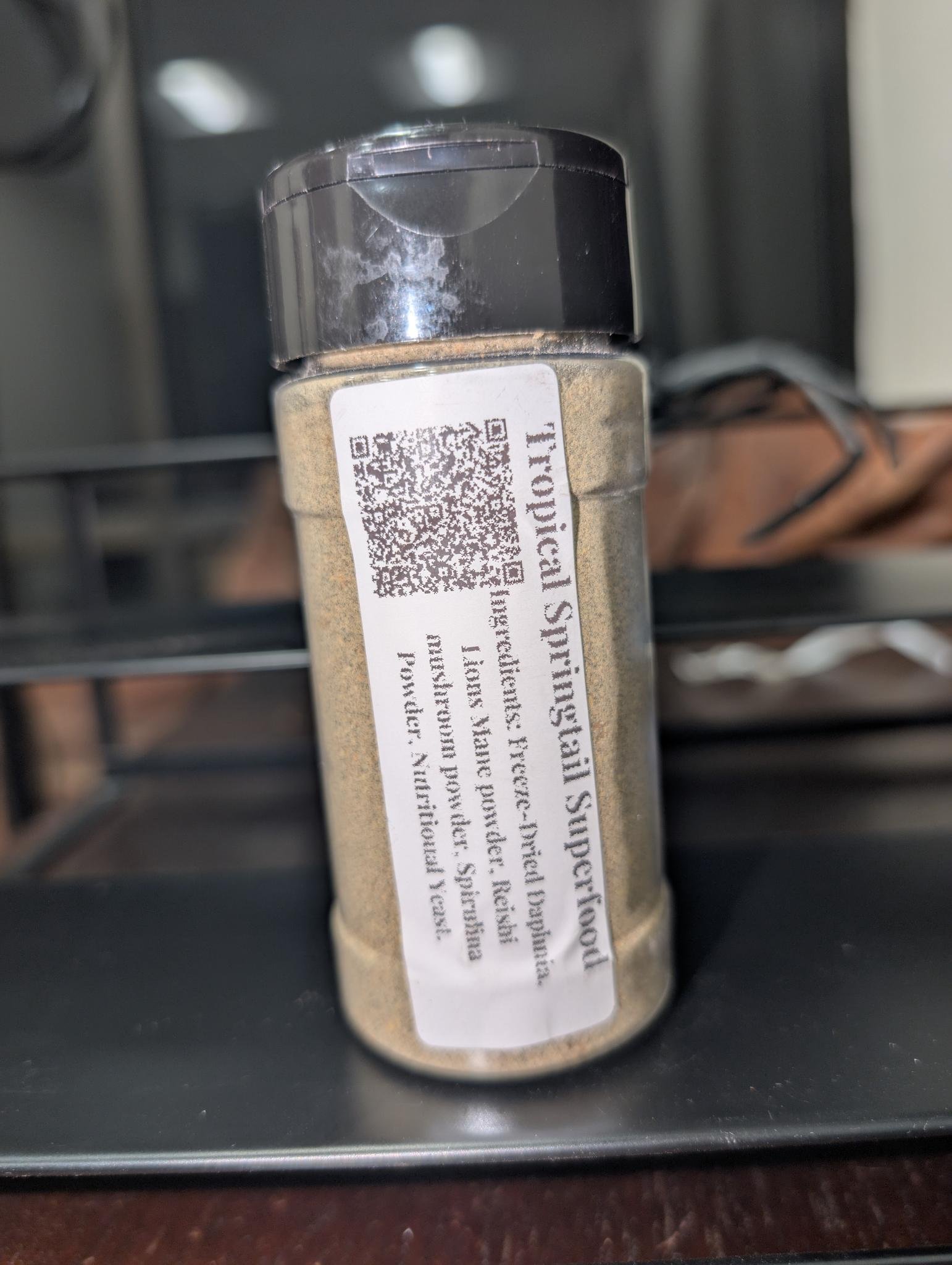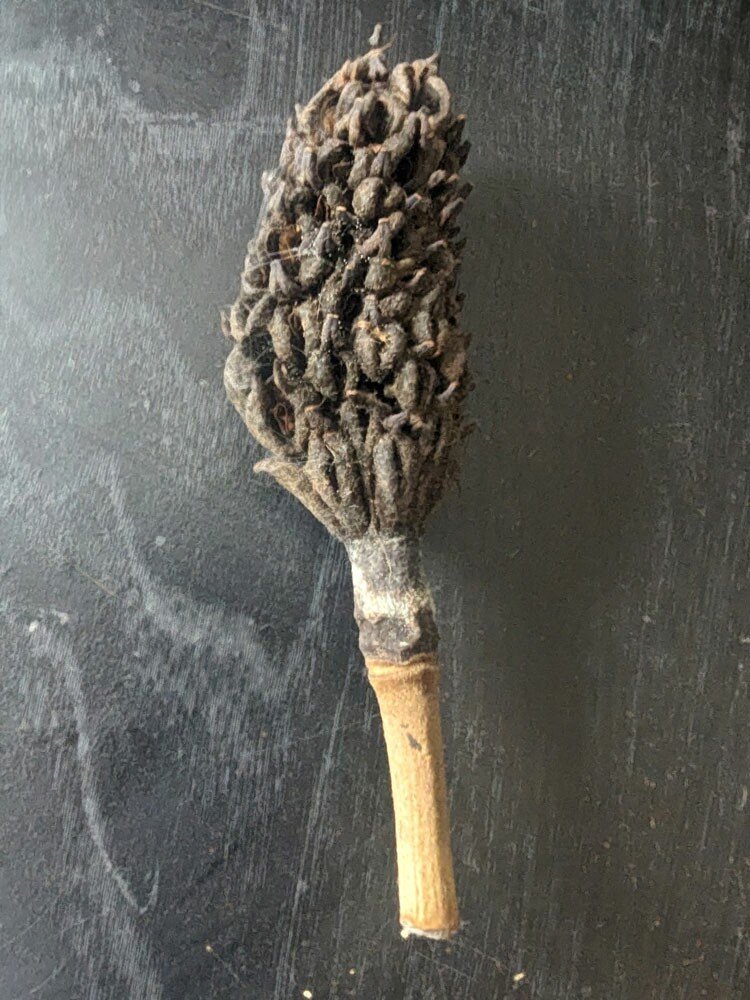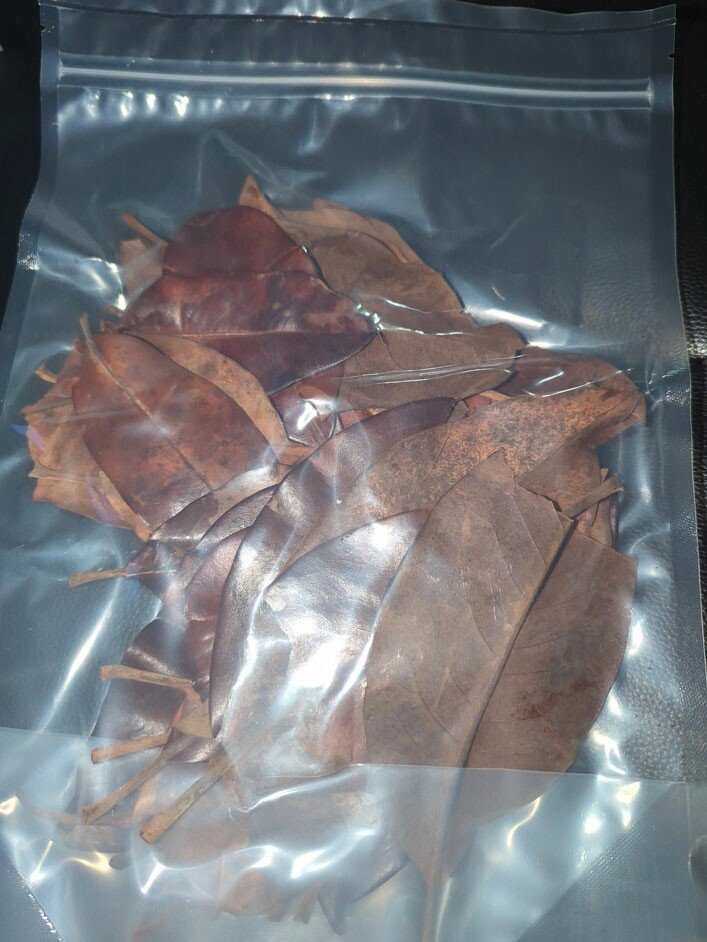Lobella sp. 'Thai Red'
25+ Count
Lobella sp. 'Thai Red', or "Thai Red Springtails", is a vibrant and rare springtail species originating from tropical regions of Thailand. It is distinguished by its bright reddish-pink coloration, which makes it one of the most eye-catching springtails available for bioactive setups. This species belongs to the Lobellidae family, known for smaller-bodied, fast-moving springtails that thrive in humid, decomposing environments.
Thai Red Springtails are highly effective detritivores, feeding on fungi, decaying organic matter, and microbial growth. Their continuous foraging supports decomposition, nutrient cycling, and the suppression of mold and waste buildup, making them a functional part of any bioactive cleanup crew.
To thrive, Lobella sp. 'Thai Red' requires temperatures between 65–75°F and high humidity levels of 85–95%. They prefer a dark, moist environment and should be kept on a rich, soil-based substrate that provides the necessary organic content, structure, and moisture-holding capacity. As a species that avoids light, enclosures should remain low-light to fully shaded to replicate their natural microhabitat and reduce stress.
Their intense coloration makes them particularly desirable for display terrariums or as a standout species in specialized springtail cultures.
25+ Count
Lobella sp. 'Thai Red', or "Thai Red Springtails", is a vibrant and rare springtail species originating from tropical regions of Thailand. It is distinguished by its bright reddish-pink coloration, which makes it one of the most eye-catching springtails available for bioactive setups. This species belongs to the Lobellidae family, known for smaller-bodied, fast-moving springtails that thrive in humid, decomposing environments.
Thai Red Springtails are highly effective detritivores, feeding on fungi, decaying organic matter, and microbial growth. Their continuous foraging supports decomposition, nutrient cycling, and the suppression of mold and waste buildup, making them a functional part of any bioactive cleanup crew.
To thrive, Lobella sp. 'Thai Red' requires temperatures between 65–75°F and high humidity levels of 85–95%. They prefer a dark, moist environment and should be kept on a rich, soil-based substrate that provides the necessary organic content, structure, and moisture-holding capacity. As a species that avoids light, enclosures should remain low-light to fully shaded to replicate their natural microhabitat and reduce stress.
Their intense coloration makes them particularly desirable for display terrariums or as a standout species in specialized springtail cultures.
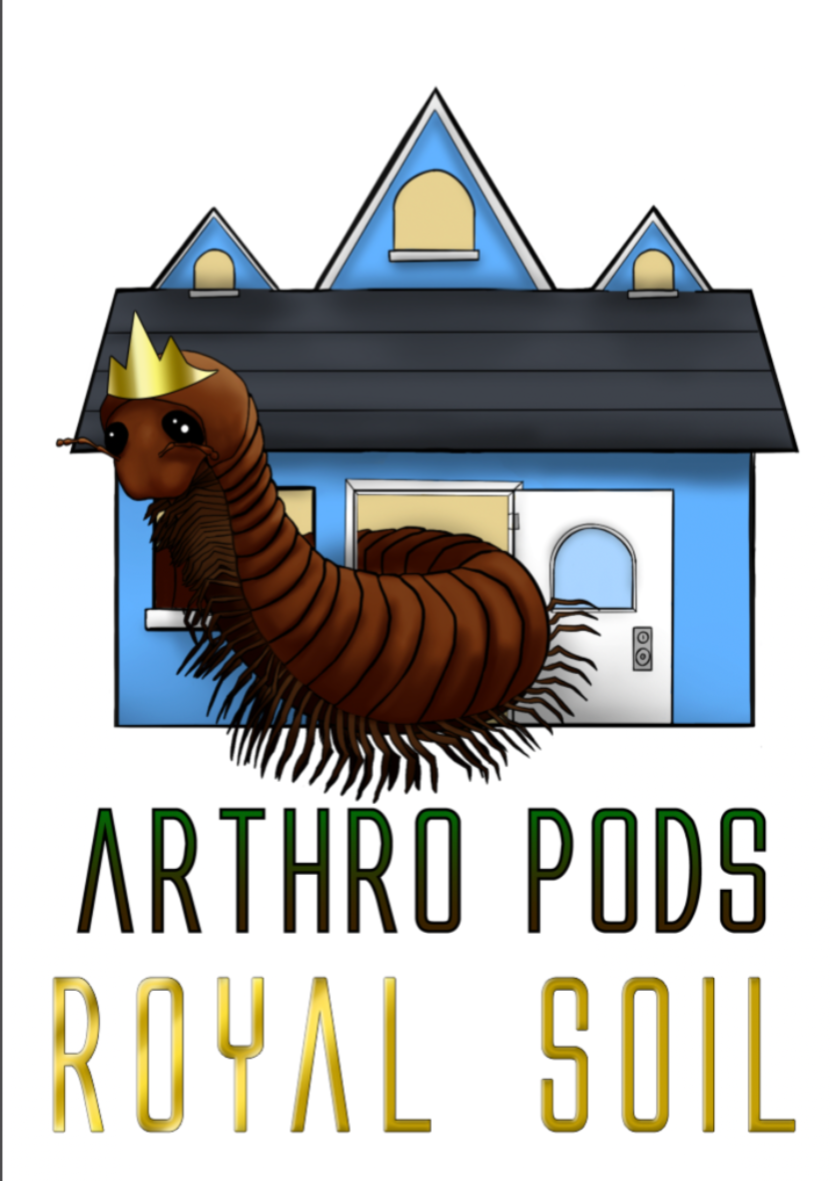
25+ Count
Lobella sp. 'Thai Red', or "Thai Red Springtails", is a vibrant and rare springtail species originating from tropical regions of Thailand. It is distinguished by its bright reddish-pink coloration, which makes it one of the most eye-catching springtails available for bioactive setups. This species belongs to the Lobellidae family, known for smaller-bodied, fast-moving springtails that thrive in humid, decomposing environments.
Thai Red Springtails are highly effective detritivores, feeding on fungi, decaying organic matter, and microbial growth. Their continuous foraging supports decomposition, nutrient cycling, and the suppression of mold and waste buildup, making them a functional part of any bioactive cleanup crew.
To thrive, Lobella sp. 'Thai Red' requires temperatures between 65–75°F and high humidity levels of 85–95%. They prefer a dark, moist environment and should be kept on a rich, soil-based substrate that provides the necessary organic content, structure, and moisture-holding capacity. As a species that avoids light, enclosures should remain low-light to fully shaded to replicate their natural microhabitat and reduce stress.
Their intense coloration makes them particularly desirable for display terrariums or as a standout species in specialized springtail cultures.
What's the ideal diet for Thai Red Springtails?
This species plays a crucial role as a detritivore, feeding on decomposing organic matter, fungi, and microbial films. This process supports nutrient cycling and contributes to the overall health of soil ecosystems. In captive environments, it is highly valued as part of a bioactive cleanup crew, helping to manage waste and mold buildup. They should be housed in your Royal Soil Blend, a rich and well-balanced substrate specifically formulated to support detritivores, retain moisture, and promote microbial activity for optimal results. For additional food, we highly recommend you check out our Springtail Superfood (designed for tropical and temperate environments) for a long-lasting food supplement that will keep your springtails thriving!
What is the benefit of Thai Red Springtails in my enclosure?
The benefit of having a thriving colony of springtails within a bioactive enclosure is their ability to naturally manage waste by consuming decaying organic matter, mold, shed skin, and uneaten food. This reduces the buildup of harmful substances, minimizes odors, and limits the growth of pathogens, resulting in a cleaner and more stable environment for invertebrates or reptiles.
In addition to their role as decomposers, springtails contribute to substrate health by promoting aeration and supporting beneficial microbial activity. This enhances plant growth in planted setups and helps maintain a balanced micro-ecosystem, reducing maintenance and creating a more natural, self-sustaining habitat.
What foods will help promote growth with the Thai Red Springtails?
Tropical Springtail Food is a hand-crafted, nutrient-dense blend specifically designed to support the dietary needs of tropical springtail species. This premium formulation provides essential protein and micronutrients that enhance growth, reproduction, and colony health in high-humidity, bioactive environments.
Developed with input from real-world culturing practices, this mix is the go-to diet for:
Red Springtails (Lobella sp.)
Florida Orange Springtails (Neanura growae sp.)
Orange Springtails (Yuukianura aphoruroides)
Giant Silver Bullet Springtails (Pogonognathellus dubius)
Globular Cave Springtails (Arrhopalites caecus)
Quicksilver Springtails (Tomocerus vulgaris)
Each serving delivers a robust nutritional profile from a blend of Freeze-Dried Daphnia, Lion’s Mane Extract, Reishi Extract, Spirulina Powder, and Nutritional Yeast. These ingredients offer high-quality proteins, immune-boosting polysaccharides, and microbial growth factors—essential for maintaining thriving tropical microfauna cultures.
This formula is ideal for bioactive terrariums, springtail breeding setups, and microfauna starter cultures, especially for species that prefer warmer, more humid conditions.
For springtail species adapted to cooler or temperate environments, consider the complementary Temperate Springtail Superfood, recommended for:
White Springtails (Folsomia candida)
Blue Podura Springtails (Proisotoma minuta)
Bylas Ant Springtails (Pseudosinella violenta)
Pearlescent Springtails (Lepidocyrtus sp.)
Albino Springtails (Ceratophysella sp. ‘Albino’)
Lilac Springtails (Ceratophysella sp. ‘Lilac’)
